
Figuring out the acceleration of ice down a plane made of ice
- Subject:
- Physical Science
- Physics
- Material Type:
- Lesson
- Provider:
- Khan Academy
- Author:
- Monterey Institute for Technology and Education
- Sal Khan
- Date Added:
- 09/22/2013

Figuring out the acceleration of ice down a plane made of ice
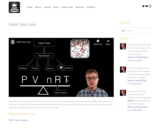
Paul Andersen explains how the pressure, volume, amount, and temperature of an ideal gas are related. Absolute zero of a gas can be determined by varying the temperature and measuring the corresponding volume of a gas sample. Several examples including Boyle's and Charle's Law are included.
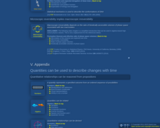
In the first video segment, we present a cartoon model of a weighted chain, which can be regarded as an approximation for a polymer under tension (e.g. a strand of DNA being stretched out using optical tweezers). The Hamiltonian and partition function for this system are described in the second segment. Finally, in the third segment, we calculate the average energy and elongation of the chain.
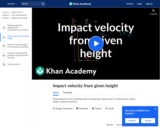
Determining how fast something will be traveling upon impact when it is released from a given height
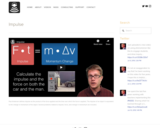
Paul Andersen defines impulse as the product of the force applied and the time over which the force is applied. The impulse of an object is equivalent to the change in momentum of the object. Several problems related to impulse, force, and change in momentum are included.
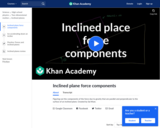
Figuring out the components of the force due to gravity that are parallel and perpendicular to the surface of an inclined plane
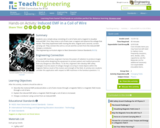
Students use a simple set up consisting of a coil of wire and a magnet to visualize induced EMF. First, students move a coil of wire near a magnet and observe the voltage that results. They then experiment with moving the wire, magnet, and a second, current carrying coil. Students connect the coil to a circuit and the current from the induced EMF charges a conductor.
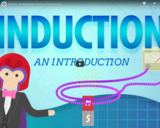
The video resource "Induction - An Introduction: Crash Course Physics #34" is included in the "Media Literacy" course from the resources series of "Crash Course". Crash Course is a educational video series from John and Hank Green.
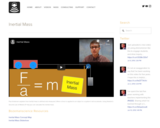
Paul Andersen explains how inertial mass is defined and measured. When a force is applied to an object or a system it will accelerate. Using Newton's Second Law of Motion (F=ma) you can calculate the inertial mass.
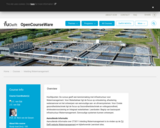
Hoofdpunten: De cursus geeft een kennismaking met infrastructuur voor Watermanagement. Voor Waterbeheer ligt de focus op ontwatering, afwatering, wateraanvoer en het ontwerpen van eenvoudige aan- en afvoersystemen. Voor Civiele gezondheidstechniek ligt de focus op Gezondheidstechniek en volksgezondheid, drinkwatervoorziening en Integraal waterbeheer. Leerdoelen: Begrip van basisopzet infrastructuur Watermanagement. Eenvoudige systemen kunnen ontwerpen.
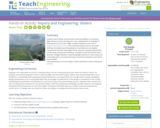
Student teams design, build and test small-sized gliders to maximize flight distance and an aerodynamic ratio, applying their knowledge of fluid dynamics to its role in flight. Students experience the entire engineering design process, from brainstorming to CAD (or by hand) drafting, including researching (physics of aerodynamics and glider components that take advantage of that science), creating materials lists, constructing, testing and evaluating—all within constraints (works with a launcher, budget limitation, maximizing flight distance to mass ratio), and concluding with a summary final report. Numerous handouts and rubrics are provided.
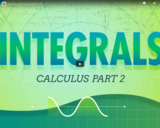
The video resource "Integrals: Crash Course Physics #3" is included in the "Sociology" course from the resources series of "Crash Course". Crash Course is a educational video series from John and Hank Green.
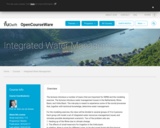
The lectures introduce a number of topics that are important for IWRM and the modeling exercise. The lectures introduce water management issues in the Netherlands, Rhine Basin, and Volta Basin. The role-play is meant to experience some of the social processes that, together with technical knowledge, determine water management.
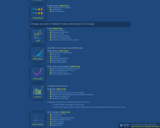
In this video, we become familiar with integrals, both by understanding them as sums of areas under plots of functions, and by understanding them as anti-derivatives. We present the u-substitution rule, which is the analog of the chain rule for differentiating composite functions.

Paul Andersen explains how forces on an object always require another object. An object cannot exert a force on itself. If net forces on an object are balanced the object will remain at rest or move with a constant velocity.
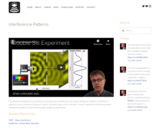
Paul Andersen explains how constructive and destructive interference can create interference patterns. Interference patterns can be created by all types of waves, including water, sound, and light. A classic experiment that demonstrates interference patterns is the monochromatic double slit experiment.

Paul Andersen explains how the internal energy of a system can change as the internal structure of the system changes. An object model will not be able to account for the restoring forces and so a system model must be used.

After watching a 1940 film clip of the "Galloping Gertie" bridge collapse and a teacher demo with a simple pendulum, student groups discuss and then research the idea of motion that repeats itself specifically the concepts of periodic and harmonic motion. They become aware of where and how these types of motion occur and affect them in everyday applications, both natural (seasons, tides, waves) and engineered (swings, clocks, mechanical systems). They learn the basic properties of this type of motion (period, amplitude, frequency) and how the rearrangement of the simple pendulum equation can be used to solve for gravitational acceleration, pendulum length and gravity. At lesson end, students are ready to conduct the associated activity during which they conduct experiments that utilize swinging Android® devices as pendulums.
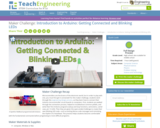
Microcontrollers are the brains of the electronic world, but in order to play with one, you must first get it connected! For this maker challenge, students learn how to connect their Arduino microcontroller circuit boards to computers. First, students are walked through the connection process, helped to troubleshoot common pitfalls, and write their first Arduino programs (setup and loop functions, semicolons, camel case, pin 13 LED). Then they are given the open-ended challenge to create their own blinking LED code—such as writing Morse code messages and mimicking the rhythm of a heartbeat. This practice helps students become comfortable with the fundamental commands before progressing to more difficult programs.

This textbook emphasizes connections between theory and application, making physics concepts interesting and accessible to students while maintaining the mathematical rigour inherent in the subject. Frequent, strong examples focus on how to approach a problem, how to work with the equations, and how to check and generalize the result.